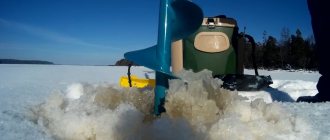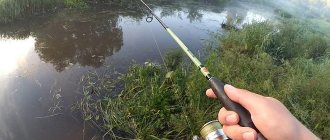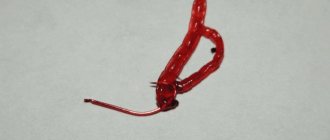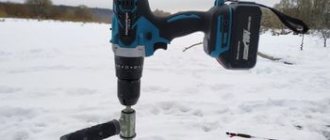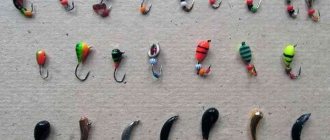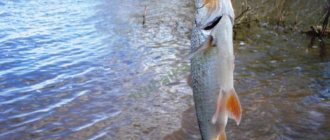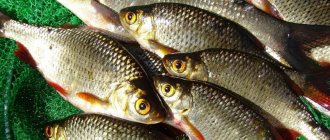It's no secret that every fisherman's dream is to catch a trophy fish, and when we go out for a fishing session, we hope to improve our results. But large fish such as carp, silver carp or grass carp are not found in all bodies of water and are caught during certain periods.
Therefore, it is not surprising that to quench our thirst for new fishing adventures, we go to rivers and lakes in the hope of catching other fish - bream, crucian carp, roach, and such fishing is no less interesting.
Of course, there will be those who will say that catching roach with a float rod is not trophy fishing and it does not arouse much interest, but true connoisseurs will confirm that this is not so.
What you need to know about roach
This fish is not as simple as it seems at first glance, and not every amateur angler achieves decent catches of roach. This is especially true for fishing with float rigs, which differ, for example, from donkeys in delicacy and even style.
In order to achieve a decent catch of roach you need:
- choose the right place on the shore of a reservoir;
- collect catching tackle;
- choose the right bait mixture and properly feed the fishing point;
- find an effective nozzle suitable for the conditions at hand.
If you simply choose a place convenient for the fisherman on the shore, attach a worm to the hook and throw the tackle into the water, this does not guarantee an outstanding catch. Therefore, it is important to understand where to look and how to catch this fish correctly, and then the fishing result will really please you.
At the same time, landing even a 200-300 gram roach on a float rig will bring a lot of positive emotions, which is what we expect from fishing.
It is not for nothing that roach is considered one of the most popular types of fish, because it is found in almost all inland waters of our country. This fish is found everywhere in lakes and rivers, and there is a lot of it in artificial reservoirs.
Not every fisherman knows that there are three subspecies of roach and these are:
- Siberian roach - chebak;
- vobla;
- ram.
Roach is often confused with rudd, but these fish, of course, have differences. The rudd has orange eyes, and the roach has red eyes; in addition, the roach has a larger dorsal fin. In nature there are hybrids of these two fish, but an experienced fisherman will distinguish a real roach at first sight.
Chebak is the only representative of the roach family that is caught industrially. But ram and roach are caught with amateur or sports gear, both with feeders and floaters. Catching roach on a donk is not so interesting, but when using sensitive equipment, fishing is very exciting.
Roach is a schooling fish and moves around the reservoir in groups of several individuals of the same size. It’s rare to see a school of roach that contains both large specimens and fry, so if a heavy roach is hooked, the likelihood of catching several more trophies increases significantly.
Bait for roaches in spring
Before fishing, you need to feed the selected area well. For spot fishing with currents, it is better to use a thicker and more viscous mixture. For calm water, crumbly baits are suitable. They will occupy a large surface area of the complementary food.
Ready-made baits:
- in the store you can purchase a ready-made mixture of the Sensas 3000 series, which is available in several types;
- CuKKQ – 44;
- Brain from a domestic manufacturer.
Some fishermen prepare their own bait. Popular bait recipe for roach:
- Take half a kilo of bran and mix with 0.5 kg of breadcrumbs (breadcrumbs are suitable).
- Then add 2 cups of corn porridge and one cup of oatmeal.
- Pour a teaspoon of salt and a tablespoon of sugar.
- Add 4 tablespoons of dry milk and stir.
- You will need vanilla for aroma. But you can’t throw it a lot.
Good to know! You need to add a little bait to the feeding. So the fish loses its vigilance and begins to swallow the bait on the hook.
When and where to look for and catch roach
Fishing for roach continues throughout the year, but in winter the fish are inactive and it is much more difficult to catch them than in spring or autumn. Active roach biting begins when birch buds swell and continues until late autumn, while the water is not too cold.
The fish spawns after the water temperature reaches 8–10 degrees, and there is no migration in places where they usually stop. In warm water, roach moves to coastal areas and basks in the sun, becoming attractive prey for float anglers.
During such periods, the bite begins in the early morning and continues until the sun sets below the horizon, unless, of course, the angler regularly feeds the fishing point.
The fish bites are confident and the roach float instantly reacts to touching the nozzle. In summer, roach is caught using float gear not only from the shore, but also from a boat, and such fishing rewards with excellent catches.
With the onset of the first cold weather, the intensity of the bite decreases and by the end of autumn it is difficult to achieve a good catch; the fish go to their usual winter stops.
Features of spring fishing
From the first days of spring, as soon as reservoirs begin to become free of ice, until the late autumn months, fishermen catch their favorite fish with a simple fishing tool - a float rod . The end of the winter hungry season forces the fish to bite especially intensely, stocking up on the necessary energy before the upcoming spawning. During the period from April to May, roaches actively attack all edible objects and restore previously lost caloric reserves.
Spawning begins after the water temperature rises to 10 degrees Celsius. As soon as spawning begins, it is useless to go fishing, because the fish will not show any activity. Having completed the natural process of reproduction, the roach is sick for some time, but soon it again demonstrates an excellent appetite and looks for sources of food with renewed vigor. Good activity is observed both in summer and autumn, but already before winter the fish becomes passive and practically does not react to the offered bait.
In March.
It is no secret that the behavior of roach in early spring is significantly different from its behavior in April or May. However, most fishermen claim that it is at the beginning of spring that there are high chances of catching a real trophy, because hungry fish quickly leave their winter camps and go to the upper layers of the reservoir. In March, you can notice a surprising increase in the bite associated with the rapid preparation of fish for spawning. With the right approach, you can get several dozen tails with a total weight of 5-10 kilograms in just a few hours.
It is at the beginning of March that the long dry winter period ends, but this depends on certain climatic indicators, because roaches can be found in the southern regions and on Ladoga. True, at this time there is still no phenomenal activity, although the largest representatives of the species begin to peck. Taking out the next trophy from the hole, every fisherman gets a lot of pleasure and unforgettable sensations.
As soon as warming comes and the reservoirs are finally free of ice, proven float gear comes into action. Soon the fish awakens an incredible appetite associated with the upcoming spawning. The roach quickly leaves the wintering pits and begins to move to shallow areas where the water is sufficiently warm.
In April.
In April, the situation changes significantly, and the previous lethargy is replaced by excellent activity. If you approach fishing correctly, you can catch a couple of real trophies, which are rapidly gaining weight and preparing for the upcoming spawning. However, do not forget that in cold regions the fish is still inactive, because it loves warmth very much and does not show signs of life during a long winter. It is important that the water has time to warm up to 10 degrees Celsius, otherwise the bite may be unsuccessful.
It is better to start April fishing on a river or other body of water with a small current. Here the roach forms large schools and intensively searches for food. However, the success of the upcoming entry into the reservoir directly depends on the search for a promising place and the choice of suitable bait.
Experienced fishermen note an interesting fact: from mid-April, the fish rapidly move to shallow water, where they join schools and begin to spawn. Catching it at a depth of 1 meter near thickets of coastal vegetation is always interesting.
In May.
May fishing is considered a real art. After all, if during the period of intense “eating” before spawning the fish bite very well, then in May the situation changes for the worse. After spawning, the need for food is not so great, so the fish is particularly capricious in terms of food choice. If yesterday she pecked perfectly at an earthworm, today she is not attracted to anything except dough or corn. Therefore, in order not to leave the reservoir without a catch, you need to get various baits in advance in order to be able to experiment and look for your ideal option.
The May roach bites are weak and timid, which forces the fisherman to use ultra-sensitive gear and light floats. It is advisable to use a store-bought mixture of dry consistency as bait. The main thing is to pre-soak it with water from the reservoir where the fishing will take place.
Following these guidelines will increase your chances of successful fishing and make your fishing day very productive.
Exposure to weather
When wondering: how to catch roach with a float rod in the spring, do not forget to study the peculiarities of the impact of weather on fish . It is no secret that stable heat forces this inhabitant of the aquatic depths to go far from the shore and not be active. Also, the bite is practically absent with a sharp change in temperature and atmospheric pressure, so it is useless to start fishing.
Most experienced fishermen begin their favorite activity after the weather is calm and warm outside, but without intense sunlight. At this time, almost any attachments are used. You should start fishing early in the morning - from sunrise to 9 am, and in the evening - from 6 pm to sunset. However, sometimes roach bite well during the daytime.
Roach fishing gear
Float tackle is the most effective for catching roach, so anglers use it all year round, even in winter, using winter float rigs. The designs of installations may differ, but the main thing in them is the presence of a float, which acts as a bite alarm.
Rod
To catch roach, use float rods:
- plug;
- flight feathers;
- match;
- Bolognese.
Each type of fishing rod has both advantages and disadvantages, but the most popular are Bolognese blanks, which are convenient to transport and during fishing. But this does not mean at all that if a fisherman does not have a Bolognese rod, then he must purchase one for roach fishing.
Any float form will do, the main thing is that it is convenient for the fisherman when casting and retrieving. For example, when fishing at long distances, a match rod will be more convenient and effective.
A float rod for roach should be:
- light;
- durable;
- sensitive.
Even if the rod is mounted on stands after casting, its low weight is important for ensuring convenience when hooking and landing fish. But, given that roaches bite often and the tackle has to be re-casted constantly, anglers choose rods of the lightest weight in order to reduce physical stress.
Recreational fishing should be fun, and the characteristics of the rod, as well as its weight, are very important in this regard. High sensitivity of the rod is needed so that the most delicate bites are visible. When fishing with a heavy and rigid rod, weak bites are not visible and the fish eats the bait on the hook, and the angler does not even know about it.
Trophy roach weighing 200–300 grams or more confidently takes the bait and such a bite is still visible. But if a school of small rams or roaches comes up for bait, it is much more difficult to catch it due to the very gentle and unnoticeable touches of the fish on the bait.
When choosing a float rod, the conditions on the reservoir are taken into account, whether there is a current in it, and also what is the distance from the shore to the fishing point. Fishing with a float in a line forces the angler to hold the rod in his hands all the time, but on a still body of water after casting, the rod can be placed on stands.
fishing line
Roach is a small fish and to catch it, thin fishing lines that are hardly noticeable in the water are used. Braid is not used, and the diameter of the monofilament base of 0.14-0.16 mm is quite enough even for catching trophy specimens.
In the spring, when the water is especially clear, the camouflage properties of the fishing line play a big role and it is better to use colorless monofilament, which is almost invisible in the water. In summer, the water turns green and the fishing line is matched to its color, so in addition to transparent, a light green monofilament base is also suitable.
Leashes are also knitted from monofilament fishing line, but its diameter is less than 0.08-0.12 mm. A thin leash is less noticeable to the fish, and even if the hook gets caught on an underwater obstacle, only the leash will have to be torn off, and the tackle will remain intact and unharmed.
Hooks
Hooks are an important element of the float tackle, which determines whether the fish wants to take the bait. Large hooks are not placed on roaches so as not to scare away the potential trophy. The hook size is 14–18, or even 20 according to the European classification, and the main selection criterion is the baits used.
When fishing for roach with a float rod, it is desirable that the nozzle completely hides the hooks, and only the sting remains exposed. It is easier to attach bloodworms or maggots, which are a favorite treat for roach or ram, on a small hook. But even when fishing with plant baits, small hooks are more convenient, the main thing is that they are thin and sharp, and are good at cutting the fish’s soft lips.
The color of the hooks is not of fundamental importance, but it is better to have colored hooks in stock, sometimes the fish respond to them more actively than to dark ones. If, after the bite has subsided, no means to “stir up” it have helped, try placing colored hooks, this sometimes helps.
The Japanese company Gamakatsu produces excellent roach hooks, but Drennan, Preston or Owner also offer a large selection.
Important! Don't forget that a hook is a consumable item when fishing. At the first signs of dullness, replace it with a new one, this will prevent fish from disappearing and improve hooking.
Floats
The float is needed not only to signal the angler about a bite, but also to hold the hook with the nozzle at the desired depth.
The float structure consists of:
- antennas;
- float bodies;
- keel;
- ring for attaching to fishing line.
Antenna
The antenna on the float is needed in order to ensure its good visibility both at short and long distances, regardless of the weather and general visibility. Floats with thin antennas are used for fishing with small baits:
- maggot;
- bloodworm;
- pearl barley and other grains.
Floats with thick antennas are used when fishing with large baits:
- corn;
- worm;
- dough.
Plug and match floats have long antennas. Floats with thick antennas are used when fishing for fish that feed in the water column and, in particular, when fishing for roach. If you intend to fish with anchored tackle, floats with a long antenna with a thickening in the middle are installed.
Float body
The float body is made of light and durable materials:
- polystyrene foam;
- plastics;
- wood.
It must be highly buoyant and resistant to moisture. Even after being in the water for a long time, the float must remain buoyant and perform its functions, helping the angler catch fish. The body of the float, streamlined in shape, is made in the form of a cylinder or ball.
The upper part of the float body, as well as the antenna, is painted in bright colors so that they can be seen from afar. The lower part of the body is painted with dark paint so that it is as invisible as possible from under the water.
Keel
The keel is necessary to stabilize the position of the float in the water after casting the tackle.
It is made from hard materials:
- plastic;
- metal
Floats with a long keel are used when fishing in the current, as well as in strong waves, wind or rain. But such a float takes longer to work and is not suitable for high-speed fishing of small fish.
They catch roach with floats with a short and weighted keel, which, after casting, quickly become vertical and are sensitive to any bite.
Ring on the keel
Floats are attached to the fishing line at one or more points. There are models in which the fishing line is passed through a hole in the float body, but for catching roach, those with a ring attached to the end of the keel are more convenient.
The float with the ring is fixed on the fishing line using float stoppers. Floats that do not have a ring on the keel are attached to the fishing line using a cambric.
When do you catch roaches in the spring?
With the onset of the first warm weather, roach fishing begins. The best bite occurs during low atmospheric pressure. Cloudy weather and drizzling rain are the best conditions. When the sun appears, the fish become active, moving in the water closer to the riverbed along different horizons.
Open water fishing season opens in April. Spawning occurs this month. Therefore, schools of roach tend to suitable places with lush vegetation. Fish move against the current. Spawning occurs closer to the shore, where there is clean water and algae.
In April, roach fishing from the shore is very effective. After all, the fish become hungry before spawning, and they accumulate in large quantities. Ready to eat whatever comes her way.
Let's celebrate! In spring, fishing in the current is more difficult. You will need plugs. You can choose fly tackle. When using a plug, a clean shoreline is required. In the month of May, there is another surge in increased appetite in the silver beauty. This is due to the end of spawning. The roach begins to leave shallow water. Moves closer to the edges. Later, it goes further and further, moving away from the shore.
Float tackle for roach
To install float gear on roach in still water you will need:
- float stops;
- leash with a hook 10–12 cm long;
- float with one attachment point on a swivel with a clasp;
- shot weights;
- swivel acting as a shepherd.
Installation of the float rod equipment on the roach is tied directly on the main fishing line:
- put a stopper on the fishing line and pull it up;
- put on the float swivel;
- put on another float stopper;
- We tie a swivel to the end of the fishing line with a Palomar knot;
- tie a leash to the swivel;
- At a distance of 20-30 cm from the lower swivel, we attach 3-4 pellets, acting as the main load.
While on the pond, the fisherman adjusts the depth of the float with the help of stoppers. It is necessary that only the float antenna remains on the surface of the water, then even gentle bites of small roach will be visible.
The distance between the swivel and the load should be greater than the length of the leash. If while fishing, due to inactive biting, the leash lengthens, this rule must be followed, otherwise the tackle will get tangled when casting. The weight of the load must correspond to the carrying capacity of the float and sink it to the antenna.
This rig is used with fly and plug rods, as well as with a Bolognese fishing rod, when fishing at close range. It won’t be possible to use it during currents because the weights or swivel will drag along the bottom and it will be difficult to see the bite.
What tackle to use for roach?
I’m not one of the ardent fans of fishing, preferring to buy canned goods and fillets in the store, but my little son loves to spend time near the water. In the village where we send the boy to rest with his grandmother, there is a small river in which various small fry live. Tell me how to make the simplest tackle for roach, since this is what is most often caught in this reservoir.
To effectively catch roach in the summer (bottom tackle is used in the fall), it is enough to acquire an ordinary float rod with a rod length of 4-5 meters (a larger stick is more difficult for a child to hold). A main fishing line with a thickness of 0.18-0.25 mm is selected for it, winding it on a simple inertial reel. For long-distance casting, it is better to use a spinning rod. When using a fly rod, you can do without a reel. The diameter of the leads should not go beyond 0.18 mm (0.12-0.15 mm is suitable). The main load is a sliding droplet, and 3-5 small pellets are attached closer to the leash. The number and weight of lead peas should be combined with the float test.
Tackle for roach in summer is equipped with small hooks, and the length of the leash should not exceed 20 centimeters (10 is enough). It is not recommended to use large stings - the fish sees them well and does not even touch the attached bait. Hooks for catching roach must match the size of the bait. For dough, maggots, insects, No. 10 is suitable, for other baits – No. 8. Points with an elongated fore-end are used when fishing with a worm or in winter fishing, when the main bait is bloodworms.
Hooks for roaches can be tied to the undergrowth in any way, even without the use of special knots. But the leash itself is attached to the main vein using the classic “loop to loop” option. The choice of float for the tackle depends on the presence or absence of current. Since the roach pulls it down when biting, you should load the buoy before the beginning of the antenna, making the resistance small. The color doesn’t really matter, the main thing is that it suits all fishing conditions. The tricks to choosing a float shape are that in strong currents models with a spherical body work better, in shallows - in the form of a spindle, and at depths - in the shape of a drop.
To learn more:
How to choose a good reel for a fishing rod?
The roach is in motion almost all the time and does not stand in one area of the reservoir. To keep the fish in a certain place, you need to use feeding. The food must also contain those ingredients that will be used as bait on hooks.
Float tackle for long casting
When fishing at a long distance with a match rod, a rig with a sliding float is mounted. When you catch roach close to the shore, it is much easier to correctly set the diving depth so that the tackle is as sensitive as possible.
For this purpose, float stops are used, lowered or raised along the fishing line to the desired point. Only the float antenna should be visible in the water, then even the most careful fish bites will be clearly visible. At long distances it is difficult to accurately position the float and therefore a tackle with a sliding float and an olive-type weight is used.
To tie such a tackle you will need:
- leash with hook;
- olive weight;
- float stops;
- sliding float with ring;
- rubber mounting bead;
- swivel number 8-10.
The installation is knitted directly on the pond, on the main fishing line:
- thread the float stopper onto the main line and pull it to the desired height;
- put a float on the fishing line;
- stretch another stopper onto the fishing line;
- place a weight on the olive;
- string a bead;
- tie a swivel to the end of the fishing line;
- Attach a leash with a hook to the swivel.
The mounting bead is needed so that the olive weight does not “break” the knot that attaches the swivel to the leash. At the beginning of fishing, the approximate depth at the fishing point is set. If the float floats up to half the “body”, then the hook lies on the bottom; if it lies on the water, the hook and sinkers lie on the bottom, in this case the upper stopper should be lowered.
The lower stopper should be at a distance of 10–15 cm from the swivel so that the weight slides along the line, limited by the stopper and the bead. There is no need to make the distance between the swivel and the stopper too large, otherwise it will be inconvenient to throw the tackle.
Having reeled in the fishing line and left an overhang of 40–50 cm, the fisherman casts the equipment to the fishing point. In this case, the weight and float slide down to the swivel, without interfering with an accurate cast. The depth at the fishing point can be large, and the upper stopper will have to be raised high along the line. In this case, the stopper should slide freely into the rings of the match rod, that is, they should be quite large.
If you take a very small float stopper, it can slip into the float ring when casting and the tackle will not take the working position. In this case, use pliers to tighten the ring on the float so that the stopper does not slip through. For long-distance fishing, floats with a carrying capacity of 7–10 grams with high antennas and a weighted keel are used. They are clearly visible in any weather, and they are much easier to cast.
The installation is done in such a way that the hook and nozzle lie on the bottom, unless, of course, the weight of the olive matches the weight of the float. If you take a smaller weight and lower the upper stopper to the required distance, the hook will float in the water column. In this way, the depth of immersion is regulated, and roach is caught both in the water column and from the surface.
Roach baits
Roach is an almost omnivorous fish, but at different times of the year it is caught with different baits.
In spring and autumn, animal feed is more effective and this fish is caught on:
- maggot;
- bloodworm;
- dung worm;
- river worm;
- caddisfly;
- burdock.
The rig is equipped with small hooks for 2-3 maggot or bloodworm larvae, and the ram or roach bites on them with great pleasure.
Interesting! at the end of spring, the larva of the Colorado potato beetle becomes the “secret” bait for the roach. Few fishermen have seen this attachment in action and there is absolutely no reason to use it on their fishing trips. The bright red larva is attractive to fish and stays well on the hook, even after several casts.
Warming water affects the gastronomic preferences of roaches and in summer they bite better on:
- barley;
- wheat;
- dough;
- bread balls;
- hominy.
In the process of catching trophy roach from the bottom, small foam balls are used as bait, raising the hook and balancing its mass. Despite the fact that such a bait does not have any nutritional value for the fish, its curiosity affects it and bites follow one after another.
Important! Bread crumb mashed with the yolk of a chicken egg and a small amount of finely ground roasted seeds is an excellent recipe for roach dough in the summer. It is prepared quickly, right on the pond and shows good results.
Catching roach on a donk
Roach is the most common fish in most water bodies, but the bulk of this fish is caught in open water in spring and autumn. Roaches are also purposefully caught in the summer, but, as a rule, these are floaters. And what about the “donochniks”? They are aimed at a completely different catch and do not consider roach as an object of bottom fishing. It's a pity. There are too many interesting and exciting things in this activity.
Lure
Having arrived at a reservoir for roach fishing, and having chosen a good place, first of all you should mix the bait mixture and let it brew to the desired condition.
Experienced fishermen make bait even before collecting the tackle, because the bait mixture has to be moistened several times and there is plenty of time for other purposes.
The roach needs to be fed frequently, so a lot of bait is prepared, on average 2–3 kilograms per day session. Only in early spring and late autumn can you overfeed the fish, and in the summer, frequent feeding of the fish can only be beneficial.
Fishing stores sell special bait for roach marked Roach, and if you don’t want to experiment and make bait yourself, it’s better to buy 3–4 kg of such a mixture and be fully prepared. Finely ground roach bait with a pronounced aroma that attracts schools of fish.
It is mixed with water from a reservoir ( not from the tap! ) to the consistency of crushed plasticine and rolled into balls. The fisherman prepares 30-40 balls of bait the size of a fist in advance and throws it at the fishing point every 5-10 minutes. This is the only way to keep the fish at the point and catch them in sufficient quantities.
Casting bait is done by hand, or with the help of a special slingshot, which you make yourself or buy in a store. The density of the balls should be such that they do not scatter in flight, but fall apart when they hit the water, creating a column of attractive-smelling turbidity.
It is impossible to feed a voracious roach with properly prepared bait, but you will definitely be able to attract its attention to the bait on the hook. To weight the balls, clay or soil from a reservoir is used, which is mixed with bait during the moistening stage.
There is no need to be afraid of noise when casting balls of bait; it will not scare away the roaches, and sometimes even on the contrary, it serves as an additional attracting factor.
To increase the nutritional value of bait for roaches, especially in early spring, chopped worms and food bloodworms are added to it, but in small quantities.
Roach fishing - hook selection
Roach fishing in spring begins in March and continues throughout the spring.
Of course, you can catch roach all year round, but you can only stimulate the roach to its maximum in the spring. Therefore, they prepare special baits, groundbait, and, of course, hooks for fishing, because not everyone is suitable for roach, but only a special one. Many factors are important: shape, sharpness of the hook, number of notches. It’s good for the British: they have a separate category of hooks for catching roach, but we have to get out on our own. Still, roach in the spring is a responsible thing. Well, with a fair amount of ingenuity, it’s easy to choose the best option.


